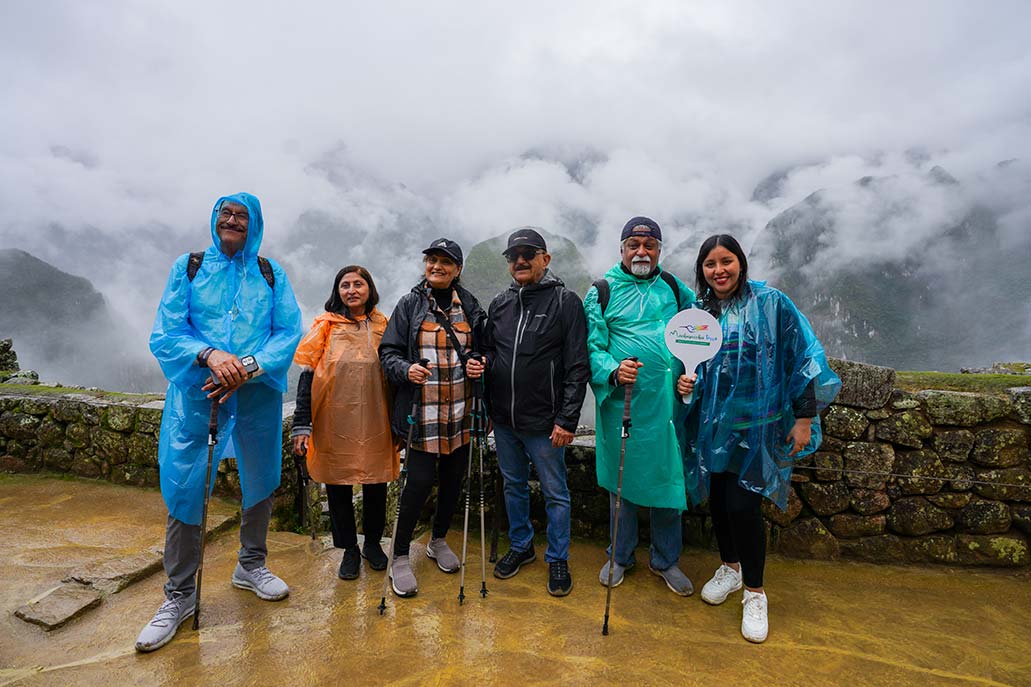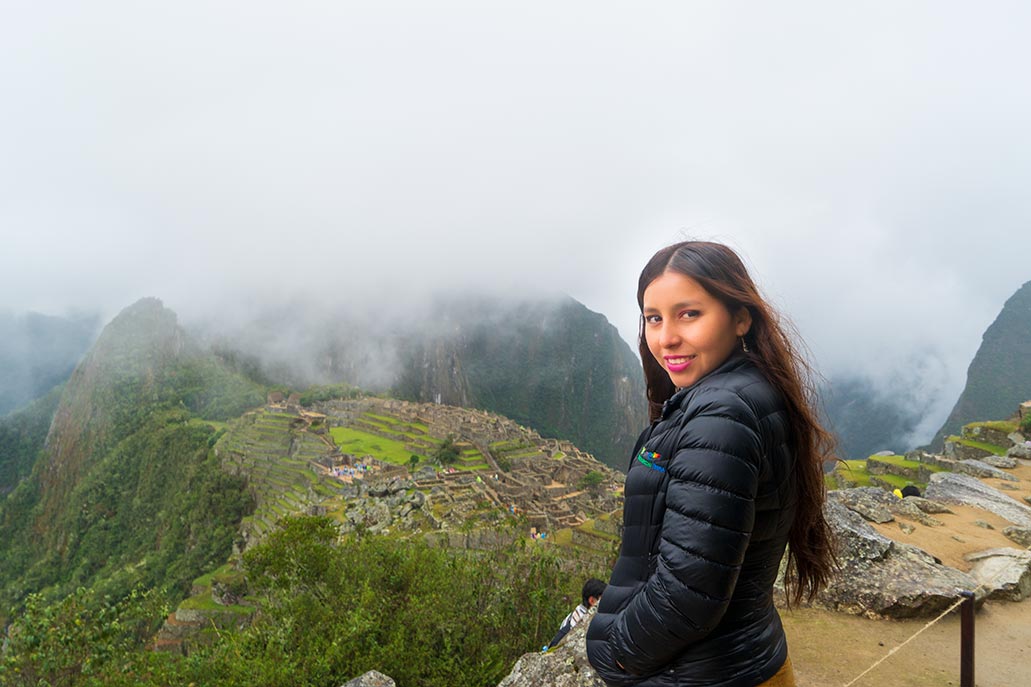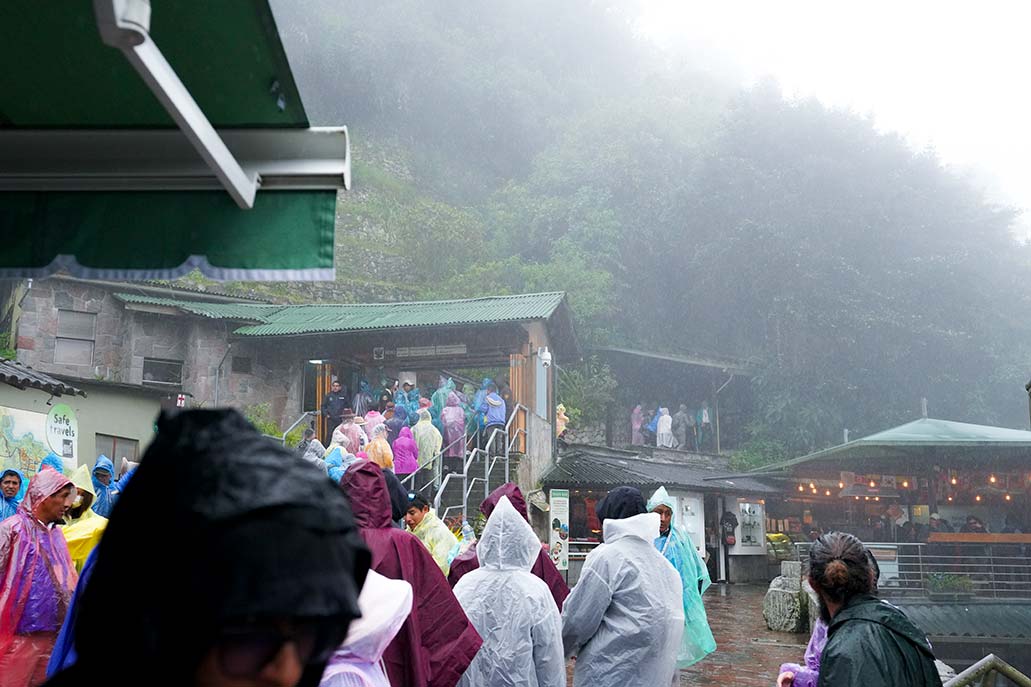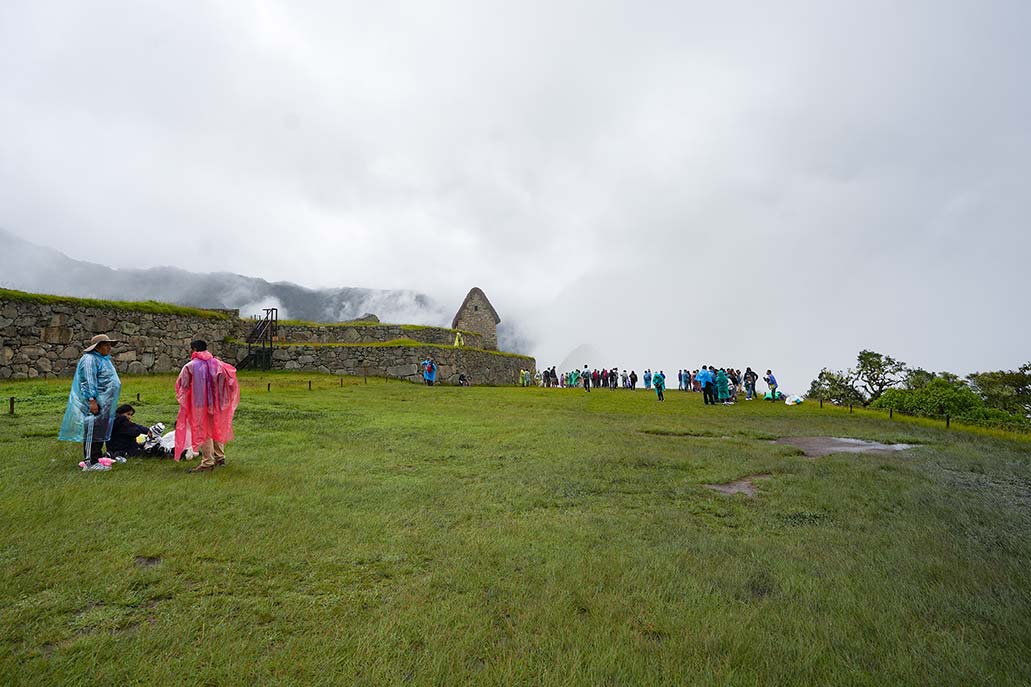Machu Picchu in the rainy season. What is it like?
Is it worth visiting Machu Picchu during the rainy season? Many travelers hesitate to plan their trip between November and March, fearing that rain will ruin the experience. But what’s behind those cloudy days and wet trails? In this article, we tell you what it’s really like to visit Machu Picchu in the rain.
Content
Weather in the rainy season
When does the rainy season begin and end in Machu Picchu?
The rainy season in Machu Picchu begins in November and lasts until the end of March. During these months, the weather is typically humid, with frequent rainfall of varying intensity.
Despite the rains, Machu Picchu remains open and continues to welcome visitors daily, as the landscape becomes greener and the mist lends a mystical atmosphere to the citadel. However, it’s important to be prepared with waterproof clothing and non-slip footwear, as the trails can be slippery and muddy.
What is the weather like during January, February and March?
During January, February, and March, the weather in Machu Picchu is warm but very humid, with temperatures ranging from 12°C (53°F) at night to 24°C (75°F) during the day. Rainfall is often intense, though short-lived, and can occur at any time, although mornings tend to be drier.
These months offer constant fog, wet roads, and a higher probability of landslides on alternate routes. However, it’s advisable to bring a change of clothes, a rain poncho, and protect electronic devices with waterproof covers.
Does it rain all day in Machu Picchu?
No, it doesn’t rain all day in Machu Picchu, even during the rainy season. Rainfall is usually sporadic and occurs as heavy, but short-lived, showers . Mornings are often partly cloudy or even sunny, while showers occur in the afternoon or evening.
However, the weather in this area is unpredictable and can change in a matter of minutes, so it’s always a good idea to be prepared. Some days feature intermittent drizzle that doesn’t prevent you from visiting the citadel, while others may have brief thunderstorms, though there are still plenty of opportunities to enjoy rain-free moments during your tour.
Is it dangerous to visit Machu Picchu when it’s raining?
In general, it’s not dangerous to visit Machu Picchu during the rainy season, as long as you follow basic safety recommendations. The citadel has well-marked and well-maintained trails, but rain can make the steps and trails slippery, so it’s important to wear good footwear (hiking shoes) and walk carefully.
The greatest risks arise on trekking routes such as the Inca Trail or Salkantay Trek, where there may be landslides or swollen streams. Therefore, if you plan to undertake long hikes, be aware of the conditions of the trails and consider rescheduling if there are weather alerts.
Practical tips for travelers
What clothes and shoes should you wear during the rainy season?
During the rainy season, it’s essential to wear lightweight but waterproof clothing. Ideally, wear quick-drying garments like thermal shirts, convertible pants, and hooded windbreakers . Dress in layers, as the weather can change at any moment, allowing you to adapt easily.
As for footwear, we recommend wearing sneakers or trekking shoes with good non-slip soles and water resistance. It’s important to have worn them beforehand to prevent blisters and avoid urban or athletic shoes without grip, as the stone paths in Machu Picchu can become very slippery in the rain.
Which backpack or gear is best?
To visit Machu Picchu during the rainy season, it’s best to bring a small, waterproof backpack (or one with a rain cover) of about 20 to 30 liters. It should be comfortable, have padded straps, and have enough room to carry the essentials: water, a poncho, snacks, sunscreen, a camera, and a light change of clothes.
It’s also helpful to carry ziplock bags or ziploc bags to protect documents, money, cell phones, and other important items, as well as a rubber-tipped trekking pole, which can also be very helpful. Packing only the right amount and keeping it organized makes traveling on a rainy day much easier.
Do I need a poncho or raincoat?
Yes, it’s highly recommended to bring a poncho or rain jacket, as they have the advantage of covering not only your body but also your backpack, which is very useful during heavy rains. Plus, they’re lightweight, take up little space, and can be easily put on or taken off when the weather changes.
If you prefer more comfort and a better fit, a hooded rain jacket is also a good option; some travelers carry both: a poncho for heavy rain and a jacket for light rain or just mist. Whatever you choose, don’t go without at least one of these protections.
What to avoid wearing if you visit Machu Picchu in the rain?
Avoid urban clothing such as jeans, cotton polo shirts, or heavy jackets, as they retain water and dry very slowly. It’s also best to leave casual footwear like canvas sneakers, leather shoes, or open-toed sandals, which don’t offer adequate grip or protection on wet roads.
Don’t bring makeup, luxury items, or unnecessary items you won’t use. It’s also not recommended to carry large cameras if you don’t have adequate protection for them. During the rainy season, it’s best to keep your luggage light, functional, and focused on your comfort and safety.
Transportation and access during the rainy season
Are there cancellations or delays during the rainy season?
Yes, cancellations or delays may occur during the rainy season, especially on rail and trekking routes. Heavy rains sometimes cause landslides or flooding of rivers, forcing the temporary closure of some sections for safety reasons. The routes to Hidroeléctrica and the Inca Trail are the most affected.
In the case of trains, operators such as PerúRail or IncaRail often reschedule schedules if there are blockages or problems on the tracks, which are very rare and infrequent situations. Contracting with formal agencies also helps ensure timely notifications of any changes.
Is it better to travel by bus or train if it’s raining?
If it’s raining, the train is a safer and more comfortable option than the bus , especially for getting to Aguas Calientes. The trains follow strict protocols for adverse weather conditions and have trained personnel to handle any eventuality. The route is also direct and avoids roads that could become dangerous due to landslides.
On the other hand, the bus (especially when combined with the Hydroelectric route) can encounter stretches of dirt or asphalt in poor condition, especially between Santa Teresa and the Hydroelectric plant. On days of heavy rain, it’s common for some sections to be blocked or slow. Therefore, if you’re looking for safety on bad weather days, the train is the best option.
Which route is safer: Hydroelectric or train?
The train route is clearly safer during the rainy season, as it is designed to operate under variable weather conditions and is constantly monitored. Although temporary interruptions due to nearby landslides may occur, service is quickly restored and the infrastructure is well-maintained.
The route through Hidroeléctrica, on the other hand, involves more risks if it has rained heavily, as the access road from Santa Teresa can suffer landslides or be blocked by swollen rivers. Furthermore, after the overland journey, you must walk near the train tracks to reach Aguas Calientes, which can be uncomfortable or unsafe if there is mud, puddles, or fog.
Frequently Asked Questions
Is Machu Picchu open during the rainy season?
Yes, Machu Picchu remains open year-round, even during the rainy season (November to March), except in exceptional cases for safety reasons.
How slippery is the road when it rains?
Quite a bit. Wet rocks and mud can make the trails very slippery, so good, traction-friendly footwear (trekking shoes) is essential.
Is it a good idea to climb Huayna Picchu mountain if it rains?
This isn’t the best option. The trail is steep and narrow, and in rain it can become dangerous due to slippery surfaces and poor visibility.
Can you hike the Inca Trail in January or February?
In January, yes, but with caution. In February, the classic Inca Trail is closed for maintenance and due to the risk of heavy rain.
What days does it usually rain the most?
There is no fixed pattern, but the heaviest rainfall tends to be concentrated between January and February, especially in the afternoons.
Can I visit if there is a heavy rain warning?
It depends on the alert level; if it’s a mild warning, the visit continues, but if it’s a red alert, entry may be temporarily suspended.
Are there any changes to the entry schedule due to rain?
Generally no, but if there are extreme conditions, access may be delayed or suspended for visitor safety.
Does the train stop if it rains heavily?
Yes, in cases of heavy rain or landslides, railway companies may suspend services until further notice.
Do the guides work on rainy days?
Yes, most guides continue as usual, although they adapt the route to avoid dangerous or highly exposed areas.
Where to take shelter if it rains during the tour?
There are some covered areas inside Machu Picchu, such as checkpoints or short rest stops, but not many; bringing a good poncho or raincoat is key.



